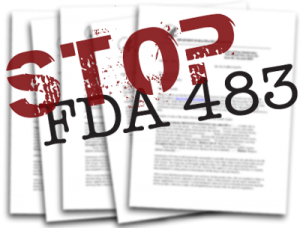Bayer Goes to War with Feds On $93 Million Tax Bill
February 9th, 2012 // 1:21 pm @ jmpickett
In 1997, a diligent vice president in the Bayer tax department named Paul Wright was reviewing a type of US tax credit the drug and chemical maker had taken in previous years for qualified research expenses and he decided that the US Internal Revenue Service had been incorrect to deny some or all these so-called QREs. And so, Bayer sought a $42.9 million refund.

New Webinar With Highly Detailed FDA 483/WL Data!
Not surprisingly, the feds refused. In response, Bayer filed suit. And then the feds – guess what? – filed a counterclaim for federal income taxes for $80.3 million, plus accrued interest totaling $13.3 million, charging Bayer applied the credit too broadly (read the claim and counterclaim). But this is when the real haggling began. For nearly two years, Bayer and the feds have been sparring over the best way to streamline the case, which reaches back years and involves more than 1 billion documents.
Earlier this week, however, Bayer lost a crucial battle after a federal court judge ruled that its insistence on using samples of work from just a few of the dozens of US research centers was untenable. Why? The notion would not allow the feds to properly identify all of the business activities that were claimed as QRE credits. And so far, the IRS has refused to budge on the sampling proposal.
The dispute is far from over and, certainly, larger tax bills have been, and will be, the subject of acrimony between the IRS and corporations, including drugmakers. However, the spat may be instructive in that this offers an opportunity to view how QREs are handled when it comes to tax treatments and ensuing disagreements. QREs, by the way, are a subset of research expenses and are limited to salaries and wages, supplies and contract research performed by third parties.
In trying to fend off the $93 million tax bill – and win its hoped-for $42.9 million refund – Bayer argues that if the IRS would “conduct a detailed investigation of every one of the millions of expenditures, at every one of the 49 (Bayer research sites), for each of the more than 20 years at issue, discovery alone would require decades,†Bayer wrote in court documents.
How so? Bayer maintains that enormous expense has already been undertaken to ready documentation for the case, such as retrieving more than 1 billion pages of electronic records from four of the 49 sites. In other words, Bayer was hoping to minimize the extent to which the IRS would be able to fully vet all of the related activities for which these QREs were claimed.
Those four sites, by the way, are located in Berkeley, California; Kansas City, Missouri; Research Triangle Park in Raleigh, North Carolina, and Pittsburgh, Pennsylvania, where Bayer maintains US headquarters. Bayer maintains these sites were chosen for sampling since they purportedly comprise 49 percent of the total QRE credits claimed for the refund.
But US District Court Judge William Standish was having none of it. “Because identification of business components is critical to establishing Bayer’s entitlement to QRE credits for the credit years, a sampling plan that would not identify all of the business components underlying the claimed QRE credits is not acceptable in the absence of agreement by the government,†he wrote in a 49-page ruling earlier this week.
He went on to say that proposing a sampling technique was, essentially, a way to avoid complying with established requirements for producing documentation, and that the burden of rummaging through the equivalent of mountains of electronically stored documents was not an excuse that Bayer could use to avoid doing so. The judge also chastised Bayer for a bit of double speak.


